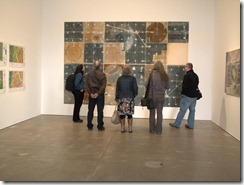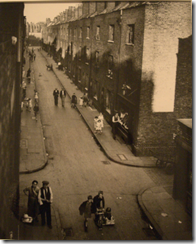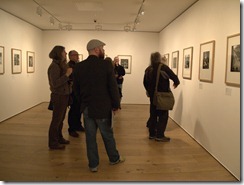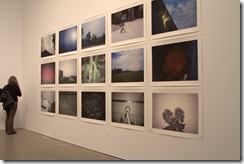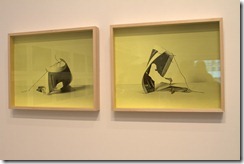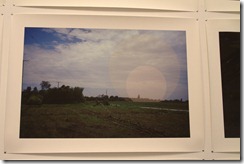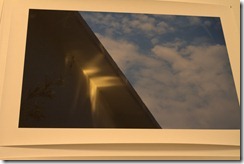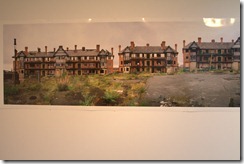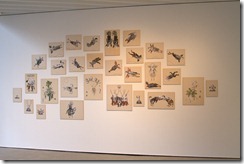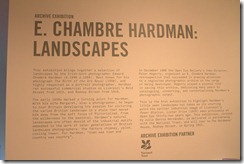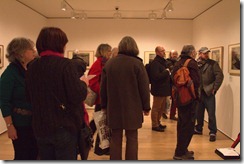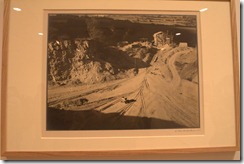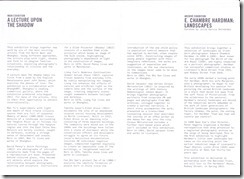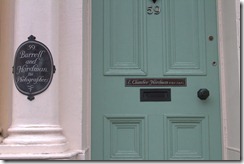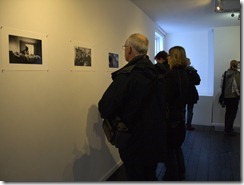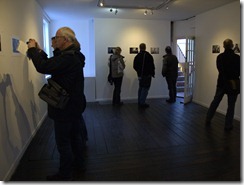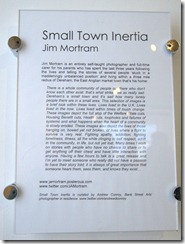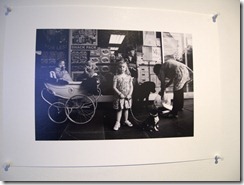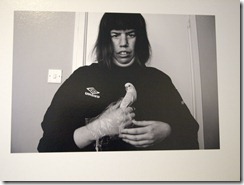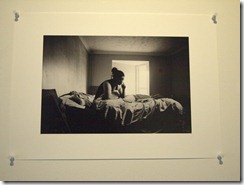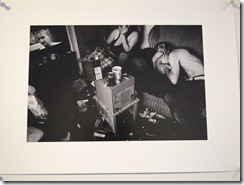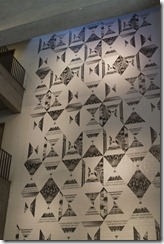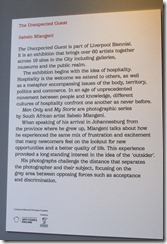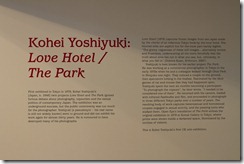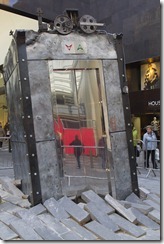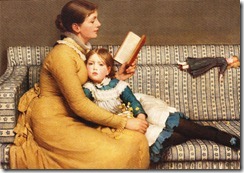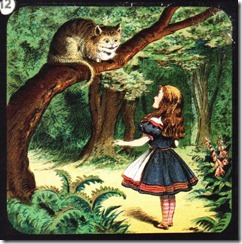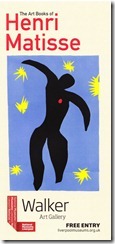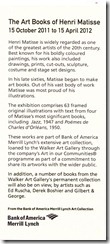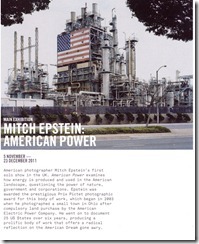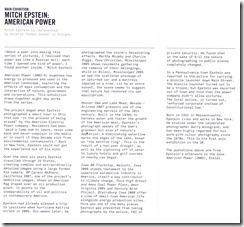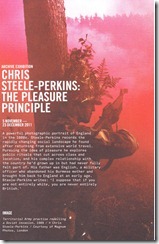Coming up to this study visit, I wasn’t sure whether it was worth going to or not. Let me qualify that statement, I’d seen Mishka Henner talk in depth about his work at the Leeds Student Weekend in September 2012, I’d also been to the curator talk when this exhibition opened and listened to Henner and Karen Newman (Curator) speak, so I wasn’t coming to this discussion with fresh eyes. However the chance to catch up with some fellow students and to see the Tudor-Hart exhibition was enough of a pull.
The visit was mixed between a few who had seen Henner in Leeds and others who were new to the exhibitions. Compared to previous study visits, this one seemed very flat in atmosphere and quite quiet, I’ve never known a visit where we were so quiet. It was noticed that a lot of people who visited didn’t spend long looking at the work and went upstairs to the archive exhibition. Again I feel that there wasn’t enough supporting text that this work needs as it’s not just visual, it’s the whole process of research, choice and selection. After we’d spent an hour or so looking at this, we broke for coffee and split into two groups led by Peter and Keith. The debate was much more dynamic, starting from what we thought about the work through to examining why we did or didn’t like something, and identifying components that give us that feeling, through to the age old debate of what is fine art photography! We could have continued there all day and for me, the sitting around with a coffee in a small group discussion is the highlight, only through discussion can I hope to evolve and grow my critical thinking.
The second part of the visit was the Edith Tudor-Hart archive exhibition, I hadn’t time to see this when I last visited so I was looking at this anew. First thoughts were that these were some strong images with a very good grasp of the elements that made a photograph work, from leading lines and strong patterns through to the use of light. On further inspection some stood out for me, I liked the way the light fell highlighting specific areas, how the people within the images were aware of and accepting of the camera yet not looking out of character. Compared to Henner this made me inspired, I wanted to look at more of her work and I’ll certainly go back and do some research.
I appreciate that we had two very different styles, one, direct photography, the other appropriation and re-seeing of things that already exist. I can see benefits and advantages of both, and I’m certainly not against either method, both have their place.
Mishka Henner- Precious Commodities
– Book collection was mixed, the content of some was confused and I didn’t see why it was relevant, it was almost taking appropriation too far e.g. ‘The global villa, logs and mark’s by Victor Sira, just seemed to be a random collection and I didn’t get the message they were trying to put across. On the other hand, I really loved ‘Lost Memories’ by Joachim Schmidt, a collection of wanted ads for lost cameras, made me wonder what had happened to the cameras and if anyone had actually seen the images on them.
– Not enough text to accompany the work
– Geological maps- wonder why they are there, it’s only when you read the free leaflet that its highlighted that he used these to identify locations for his larger Levelland Oilfield work.
Looking at the Levelland Oilfield work
Highlights
– Levelland Oilfield was eye catching and as the largest piece the showstopper of the exhibition
– Discussion with fellow students always worthwhile
– Seeing “ Less Americains” makes sense now I’ve looked at the original work more
What I took away with me
– Changing well known work and removing parts of it spurred two reactions on, one to see the original, the second to modify the work and add bits in
– Came away with ideas on how I could appropriate the work myself
Notes
This was the third time of seeing the exhibition and I think it helped having been to the curator talk with Henner and Karen Newman. There does need to be some more supporting text with this as I feel that his though processes and the all the effort that goes into this that we don’t see, doesn’t come across as it should do
Edith Tudor-Hart ‘Quiet Radicalism’
North London c 1934
Looking at the archive exhibition
Highlights
– Composition of the images
– The use of light in them to highlight specific areas
– Strong black and white tones which were aided by good compositions featuring a spread of light and dark tones across the image, e.g. in the colours that the people were wearing
What I took away with me
– Try to envisage the lighting better when seeing in black and white
– Always use strong composition
– Get the subject eye, they’ll respond differently (hopefully for the better)
Notes
– Really enjoyed these, lots for the eye to look at in the image. From the selection that was on offer, I didn’t feel that her propaganda or political side came through too strongly

